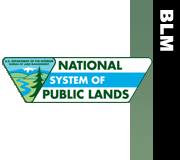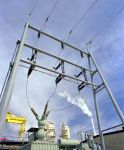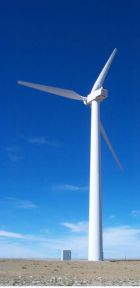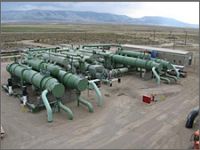|
Print Page | |||||||||||||
Toward the Future - Renewable Energy
The Jarbidge Field Office is leading the Environment Impact Statement (EIS) for a second wind energy project. Encompassing 30,700 acres of public, state and private lands in the Jarbidge Foothills, southwest of Rogerson in Twin Falls County, Idaho and west of Jackpot in Elko County, Nevada, the proposed China Mountain project is one of the largest wind energy developments yet proposed for public lands.
BLM-Idaho is also actively managing competitive leasing of federal geothermal resources under new leasing regulations finalized in 2007. In 2008, a total of 18 federal geothermal parcels in Idaho were nominated for leasing and sold at competitive auction. Future leasing will proceed under the recently completed Nationwide programmatic Environmental Impact Statement (PEIS) for geothermal energy development. With site-specific environmental analysis complete, the BLM is preparing to issue a geothermal lease (non-competitive) for public lands in Sulphur Canyon. The Burley Field Office continues working with proponents of geothermal projects in the Raft River Valley, approving resource exploration plans on non-leased parcels in the area. The Boise District Office is supporting existing leases in the Crane Creek field.
Linking Production and UseIdaho is also an important geographic link between production facilities and energy markets. Natural gas pipelines and power transmission lines that cross southern Idaho deliver energy produced in the central Rockies to users in Idaho and the Pacific Northwest. BLM-managed lands in the state can play a key role in expanding pipeline and powerline capacity while protecting and conserving other resources found on the land.
The BLM and the Department of Energy (DOE) in cooperation with the U.S. Forest Service have also designated 6,100 miles of energy transport corridors on Federal lands in the 11 Western states. Of the 314 miles of these corridors located in Idaho, 296 are located on BLM-managed lands. More information about the West-wide Energy Corridor designation is available at http://corridoreis.anl.gov. |
||||||||||||||








 Idaho's potential for producing wind energy is already being realized after the BLM’s approval in 2006 of the
Idaho's potential for producing wind energy is already being realized after the BLM’s approval in 2006 of the 
